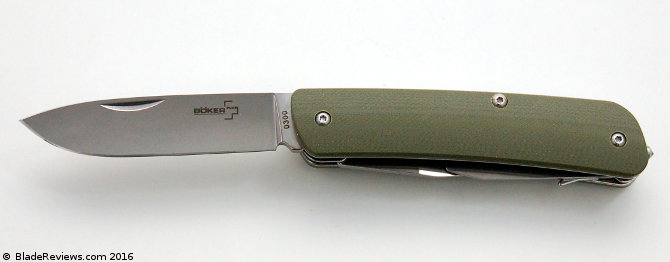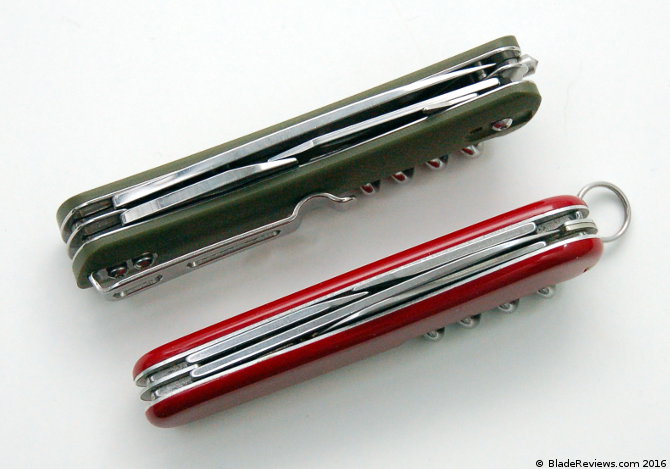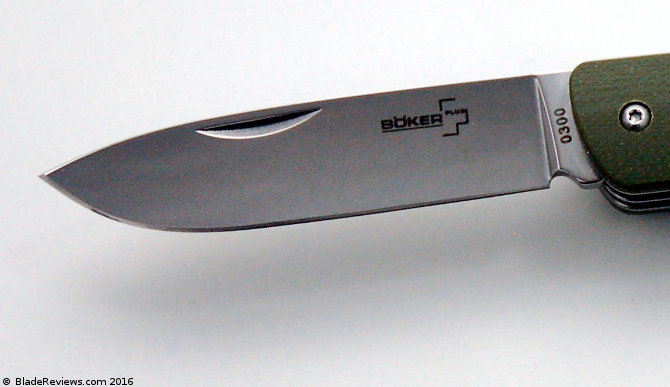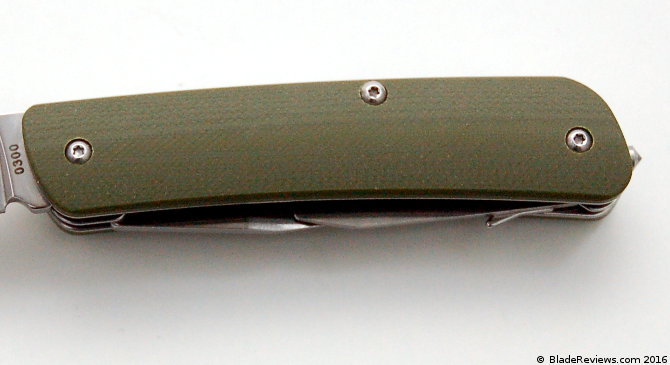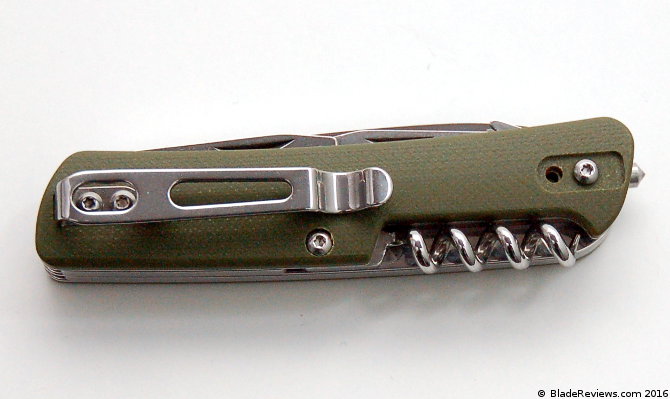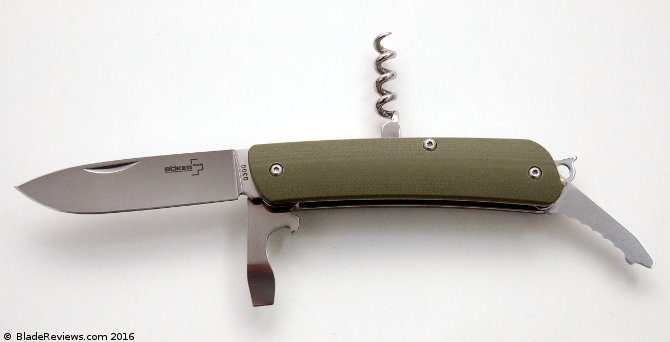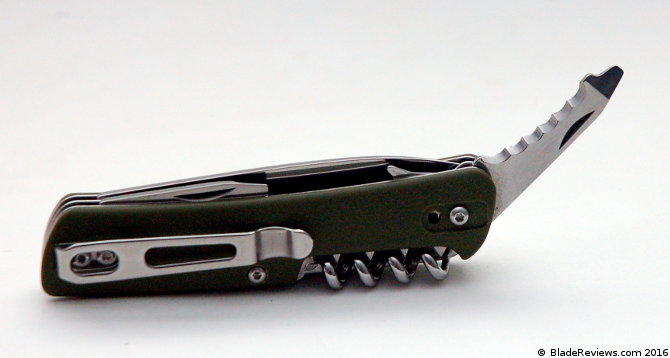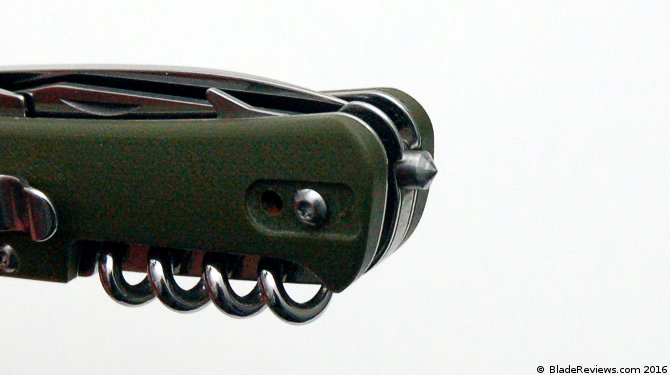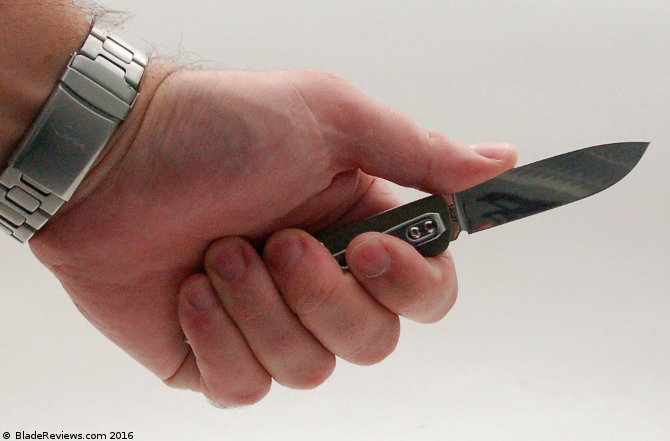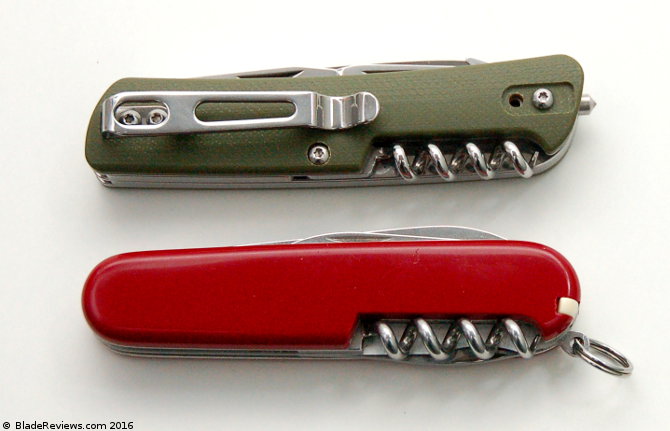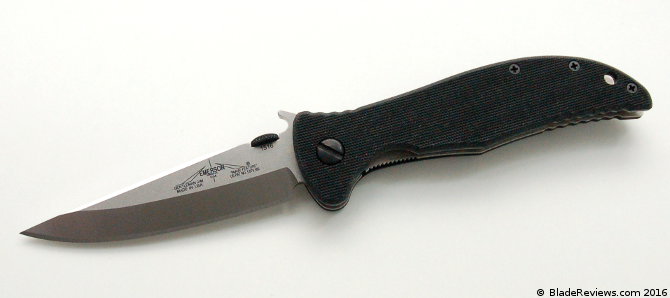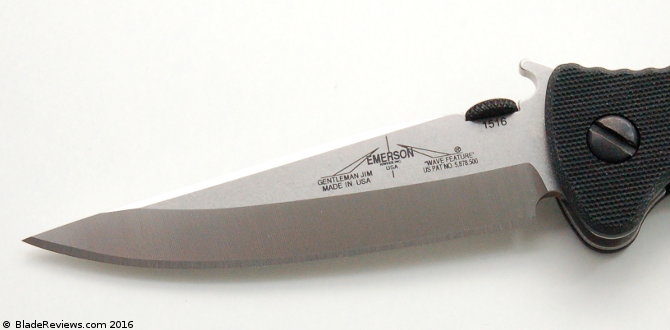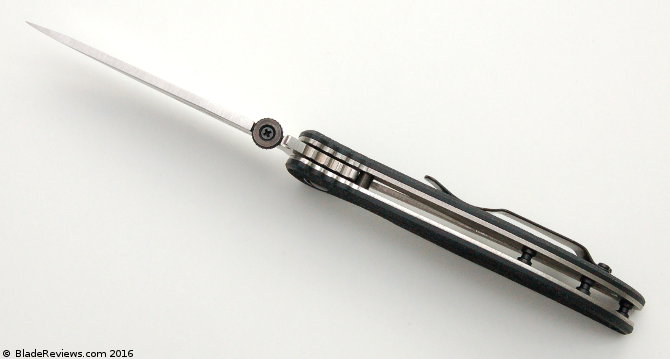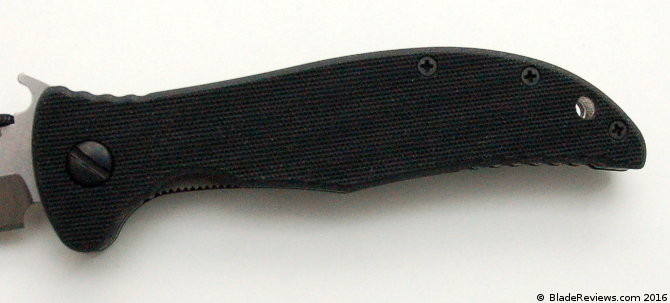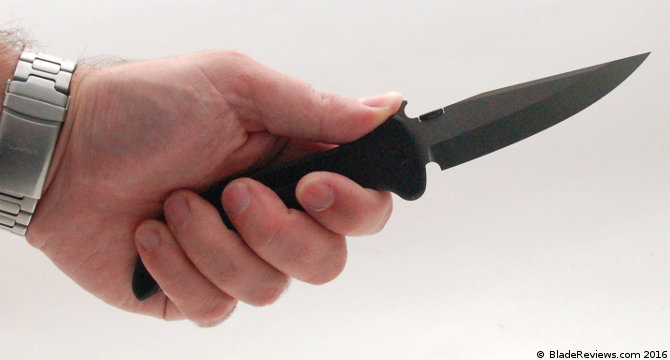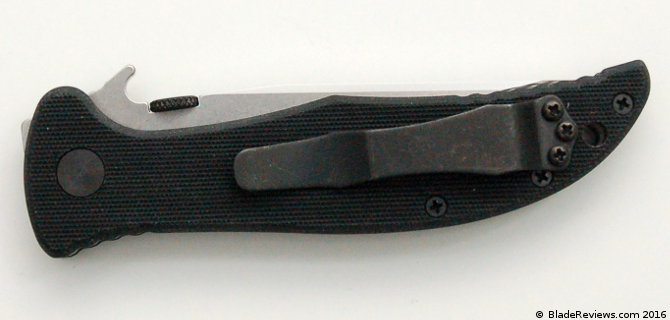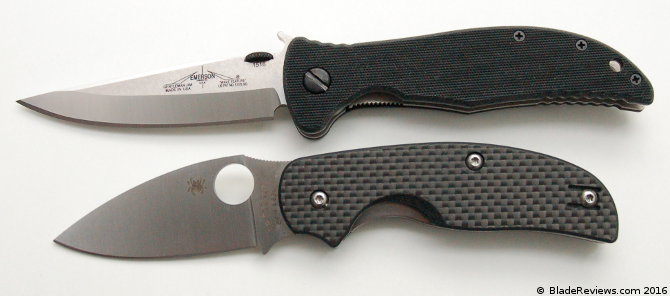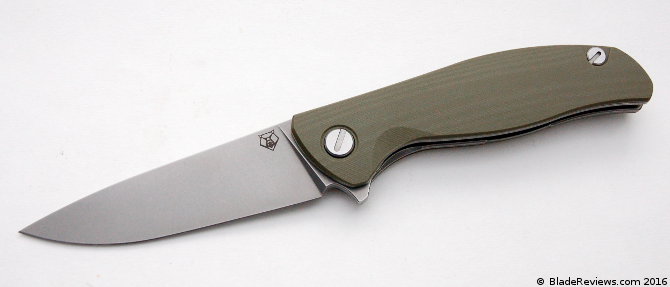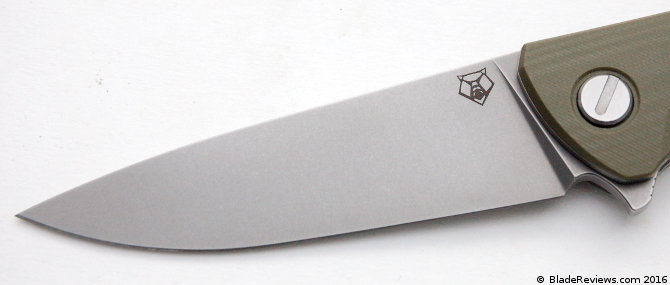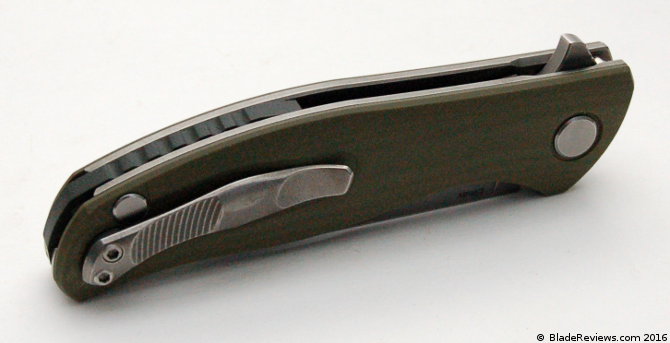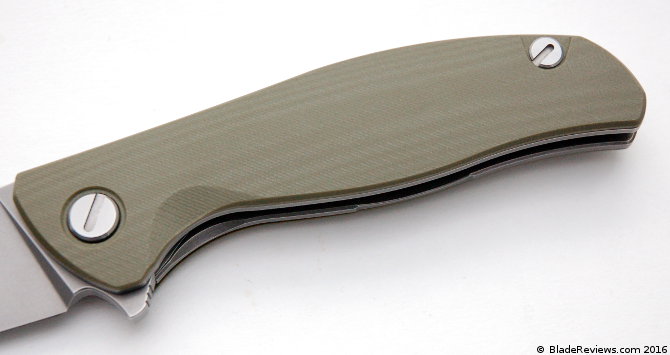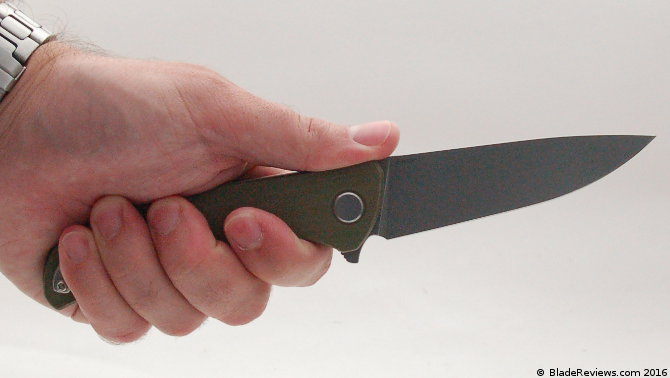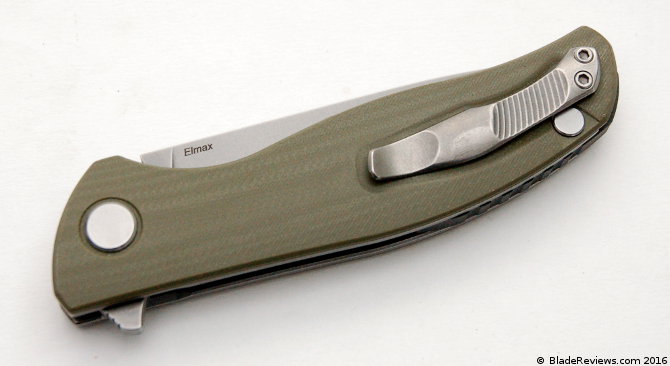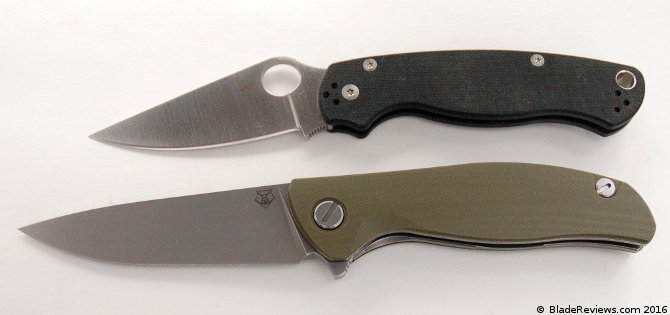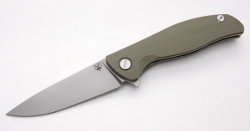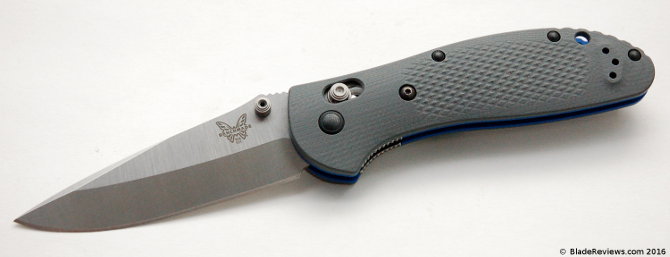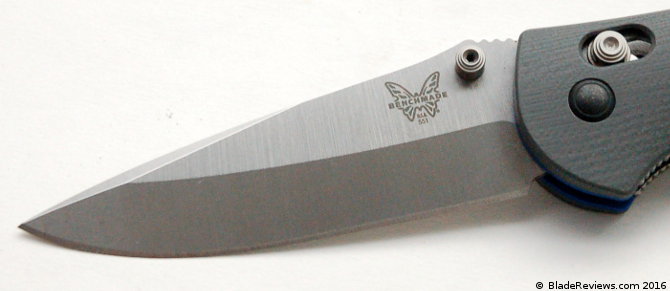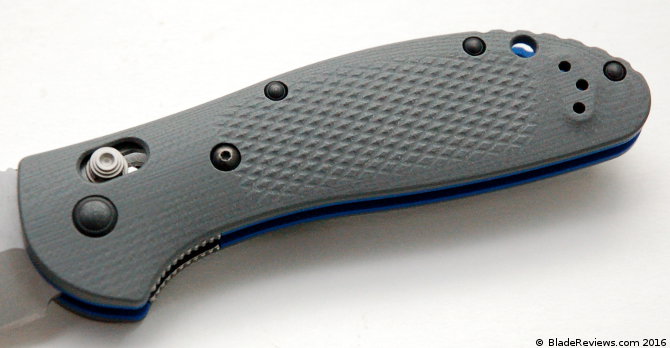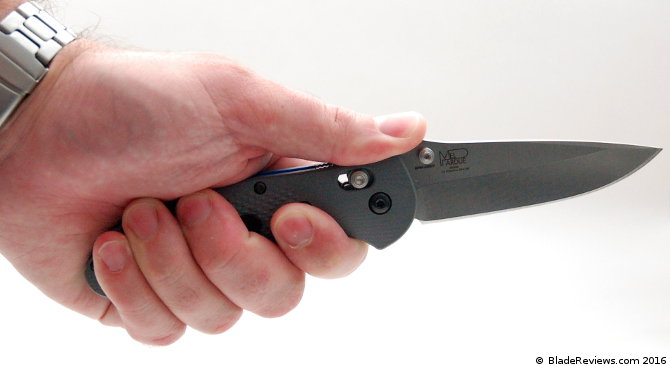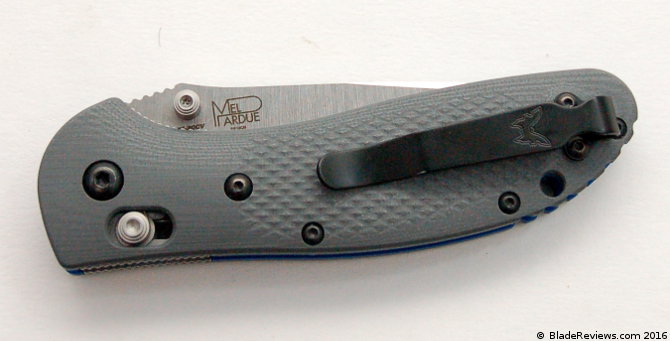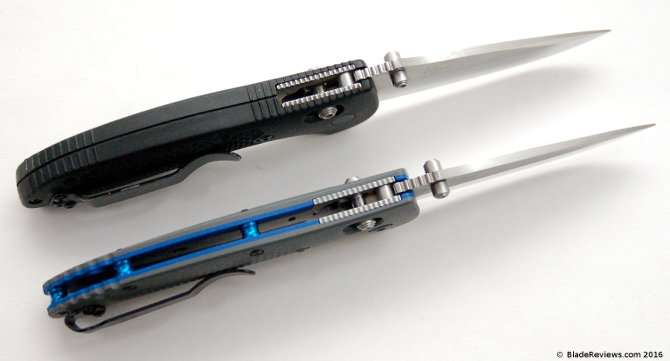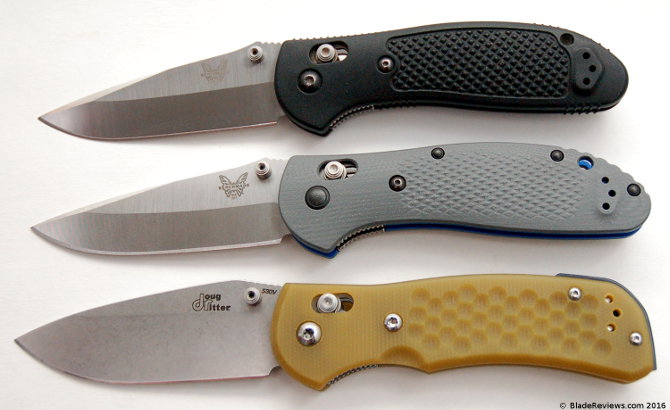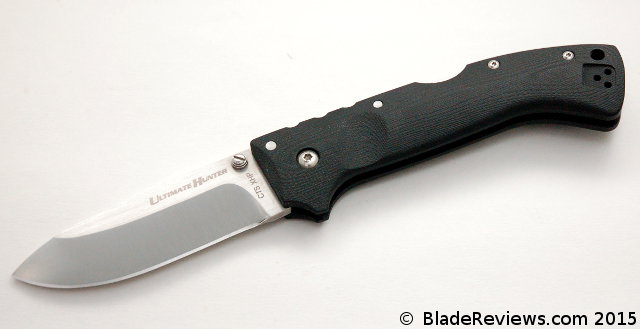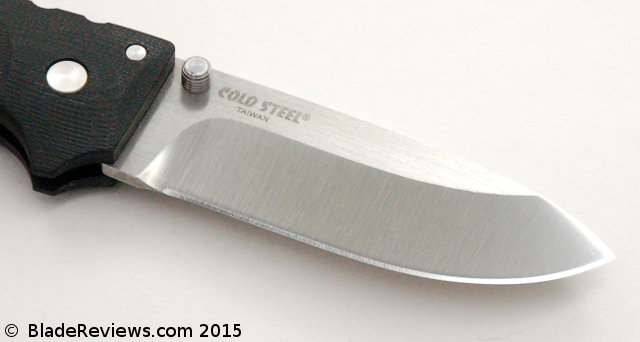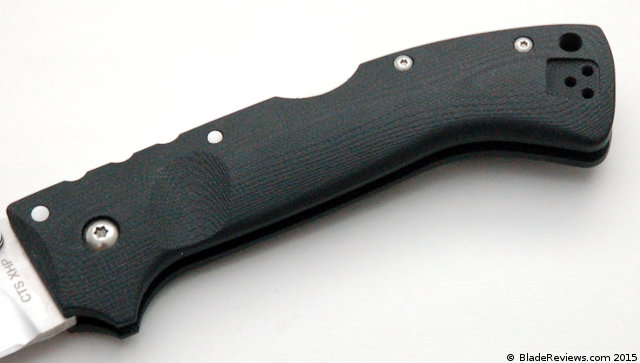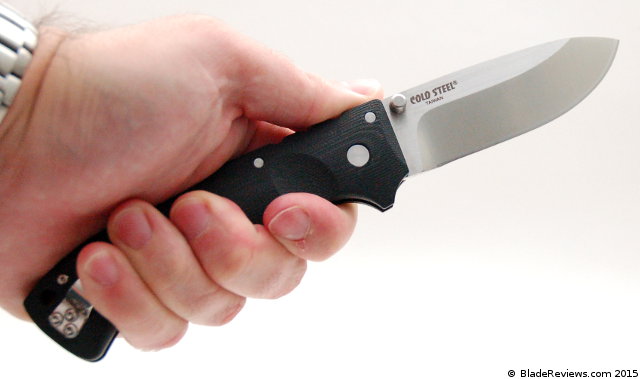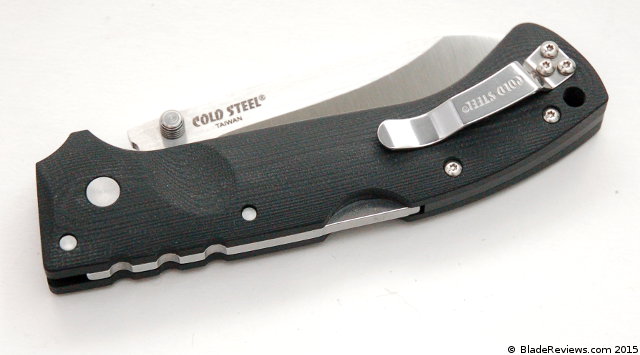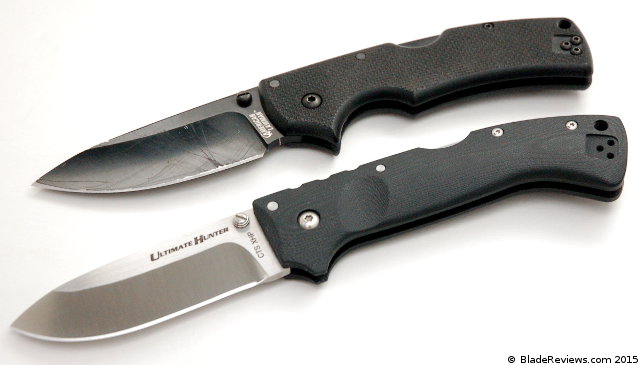It’s not every day I get to share a new manufacturer. I was recently approached by Robert Yates with Arthos Knives about checking out his new line of fixed blade outdoors knives. Robert is an engineer by day, who decided to take the leap and start his own knife company. I think basically anyone who enjoys knives long enough eventually dream of designing their own knives, or starting a knife company. I thought it would be interesting to see what he developed, and I told him I’d be happy to check out his new knife.
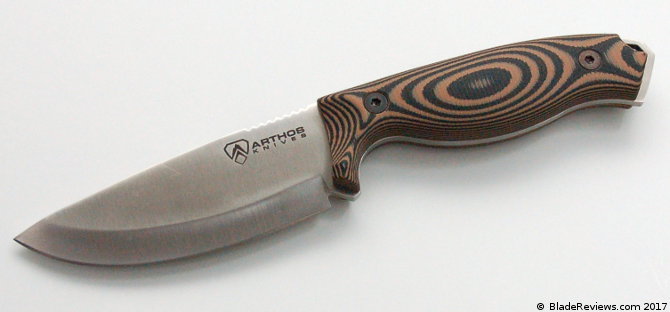
Arthos stands for “The ART of Hunting, Outdoors, and Survival”. This drop point fixed blade is the only knife in their catalog currently, and it does not have a name. I will refer to it as the “Arthos” throughout the review.
General Dimensions and Blade Details
The Arthos has an overall length of 8.6″, a 4.0″ blade. The handle and sheath are made in the USA while the blade is made in China. The knife is finished an assembled in the USA.
The Arthos is geared towards the outdoors crowd. It is a little bigger than my ESEE-3. This could be a good camp knife. It’s big enough to do some light chopping and batoning, but small enough to carry around on your belt without issue. I’m not a hunter, but could see it being used in that capacity.
The Arthos has a simple drop point blade. This classic blade shape is capable and versatile. The edge is almost a continuous belly ending in a strong tip. Arthos went with a saber hollow grind. It makes for a strong knife.
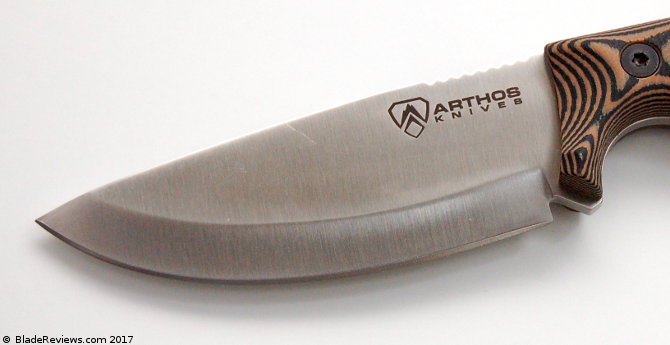
I tested this knife on some seasoned oak firewood, bamboo, 2x2s, and green wood. The Arthos came sharp, and is a good carver. The uncoated blade peeled off thin slices of wood with ease, and did a good job limbing small branches. I am a little spoiled by heavy duty convex ground blades like my Fallkniven A1, and Bark River Bravo 1 (to be reviewed), but for a mid size knife I felt like the Arthos held its own. The tip is strong and held up under some light prying.
I also did a little batoning with the Arthos. The relatively thin and short blade don’t make this a great choice for batoning, and neither does the saber hollow grind, but the blade held up to the beating and I was able to pop apart smaller diameter pieces of wood.
Arthos decided on D2 steel for their fixed blade. D2 is a good choice for a camp knife. It’s tough and it holds a good edge. D2 has a reputation for being stubborn to sharpen, but I haven’t noticed any issues with this simple blade shape. In fact, the Arthos sharpens up nicely on my Lansky Crock Sticks. D2 is a semi-stainless steel, so it will stain and it may rust if you aren’t careful with it. Arthos does offer this knife with a black coating, which may not be a bad idea for humid environments.
Handle and Ergonomics
Robert mentioned to me that it always bugged him how the handles on knives felt like an afterthought. Here he wanted to give the handle special attention. I gotta say he did a great job with it. The Arthos features a fully contoured CNC machined G10 handle. These were done by Stoner CNC, and they did an excellent job.
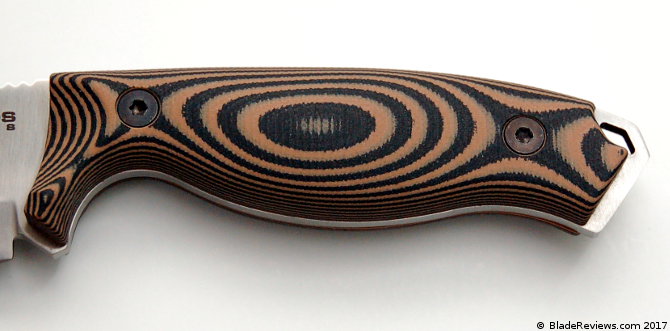
I will note that there is no locktite on the torx hardware. If you plan on using this knife spiritedly you will want to add some thread locker prior to taking it out.
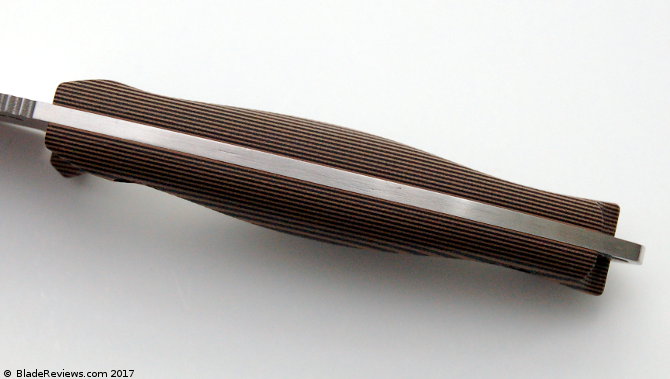
Arthos offers their knife with a variety of color options. The scales are held in place with T-10 torx bits.
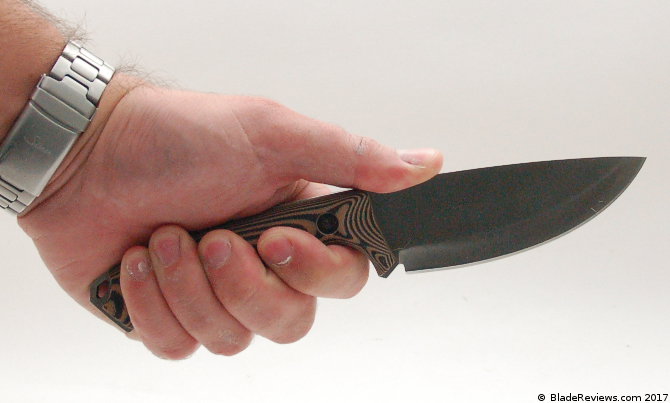
As you can imagine, the handle feels great. There is plenty of palm swell to support your hand, and your fingers fall naturally into the countours of the handle. There is a short run of jimping on the spine of the blade. Personally, I feel that the jimping is too sharp to be useful without gloves. On the bare thumb the jimping is painful for any kind of serious cutting. Beyond that I found the handle to be comfortable. I think the choice of machined G-10 handles kicks things up a notch on the Arthos.
Sheath
The sheath is another part of the knife where Arthos went above and beyond. The Arthos features a hand fitted custom kydex sheath. This pancake style sheath has been nicely finished; no sharp edges and a generous drain hole. The blade pops out with the deliberate push of a thumb, and slides back in with a satisfying “thwack”. There is no rattle or wiggle.
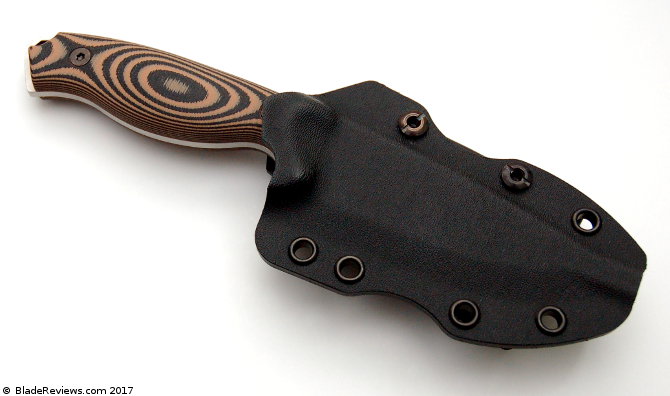
Arthos also included a Tek-lok pre-attached to the sheath. This is an expensive add on to include, and makes the sheath easy to attach to a belt. At this price point you will be hard pressed to find a knife with a nicer sheath.
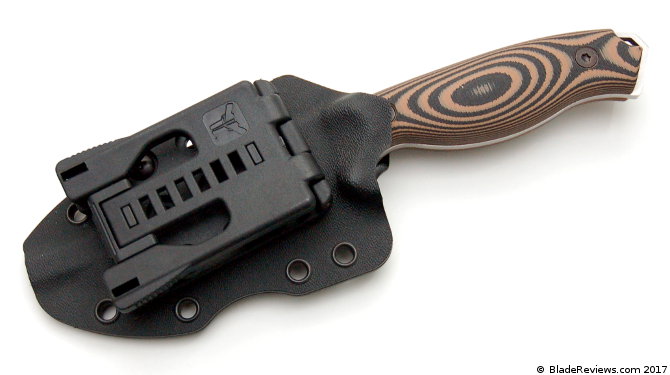
Arthos Knives Drop Point Fixed Blade – Final Thoughts
For a first offering, I think Arthos did a great job with their D2 hunter. The handles and sheath are top notch, and serve to elevate the basic blade. I can’t think of anything else that has handles and a sheath as nice as the Arthos at anywhere near this price point. The blade is serviceable, but pales in comparison to the sheath and handles. The grind is basic and I am not a fan of the jimping, but the blade performs well and the D2 steel is a good choice for and outdoor fixed blade.
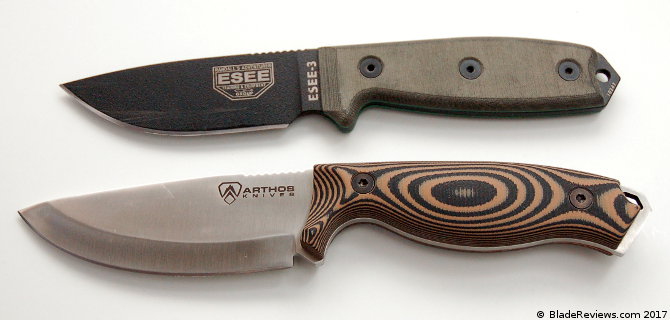
If I were to offer Arthos Knives some constructive criticism, I’d recommend upgrading the blade. I might suggest thicker stock with a full flat or higher grind, and perhaps bringing the manufacturing of the blade over to the USA. It may significantly increase the price, but at that point you would have a truly premium product, and I think the handles and sheath justify it.
As it stands I think this an impressive first offering from a new company. For those that are interested in this knife, I think that the Arthos provides a lot of value for money, and the exceptional handles and sheath distinguish it from a competitive market. I’d recommend it.
[easyazon_block add_to_cart=”default” align=”center” asin=”B01MRRZ77B” cloaking=”default” layout=”top” localization=”default” locale=”US” nofollow=”default” new_window=”default” tag=”brdfkdfk-20″]
I recommend purchasing Arthos Knives directly from the manufacturer or at Amazon. Please consider that purchasing anything through any of the links on this website helps support BladeReviews.com, and keeps the site going. As always, any and all support is greatly appreciated. Thank you very much.
